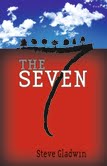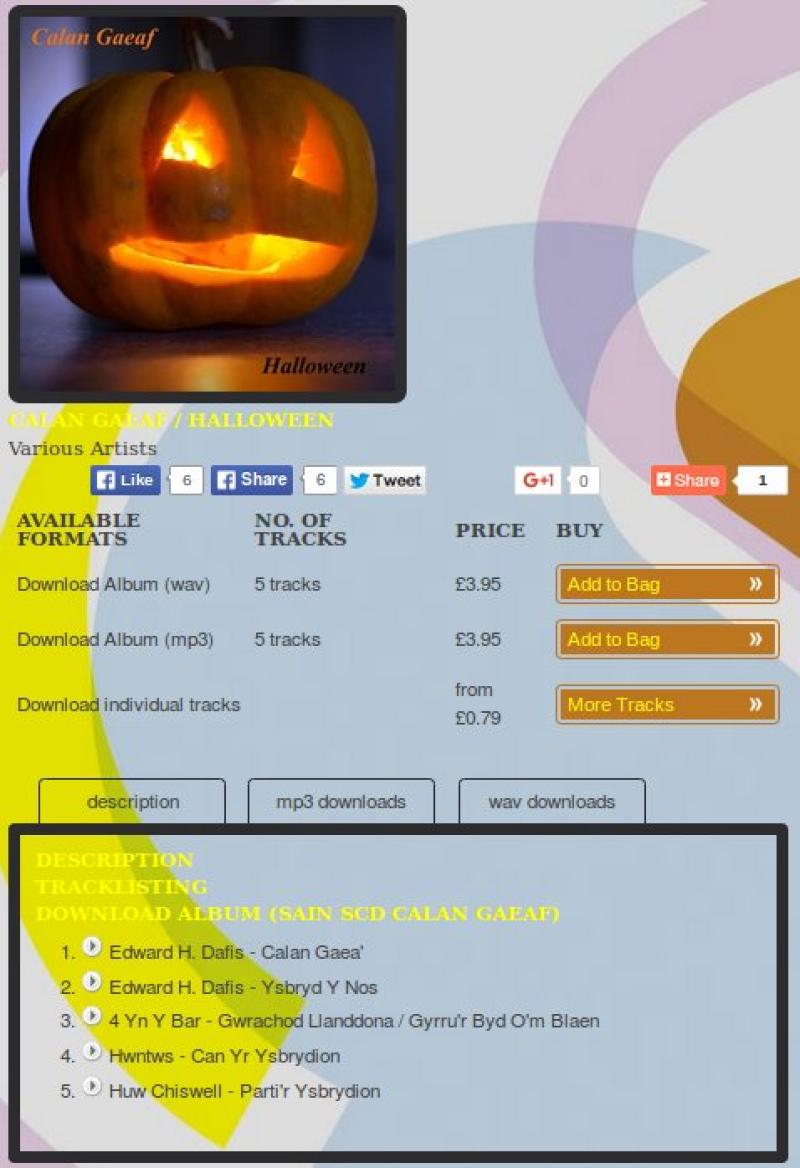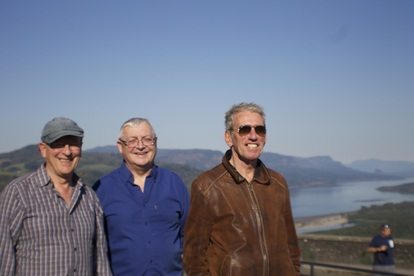Blogs
Thanks to Ceri and Gaabi for brilliant hospitality while we were in Portland - coffee, beer, late night TV, limo'd all over town like rock stars; and to Phil and Mike for excellent company. PSU was fun, as was Wordstock: that Chelsea Cain is something else! I SO nearly missed the plane the morning I left for New York - always a sign of a seriously good time, just a notch below being carried on to the aircraft on a stretcher. Next time.
Big love!
On 30th October 1799, The Llandovery Bank was established in Llandovery in the premises known as the King’s Head on Stone Street, where it was locally known as the ‘Black Ox Bank’ (‘Banc yr Eidon’ ) because the banknotes were embellished with an engraving on the left hand side of a Welsh black ox.
Historically, the Welsh hill farmers derived their main income from the breeding of black cattle, before taking them into Eastern England to be fattened up before sale in London markets. The long journey home meant that the travellers were vulnerable to attacks from highwaymen and armed gangs, so there became a need to establish a way of transferring the proceeds from the sale to a bank near the home farm.
David Jones, a successful local drover who had also married into a rich family, established the Black Ox Bank in Llandovery, as it was a traditional meeting point of the Carmarthenshire drovers, because of its rich meadow land, ideal for resting the cattle.
David Jones's grandsons continued the Llandovery Bank, and also opened branches at Lampeter and Llandeilo, under the title ‘David Jones & Co.’ This company was sold to Lloyds Bank Ltd in 1909, thus ending the last surviving private bank in West Wales.
Born on this day 1937 in Deri, near Bargoed
Brian Price - former Wales and Lions rugby international. A teacher by profession he later became a journalist and sports presenter for radio and television and in 2006 he became President of the Former Players Association.
Price is perhaps best remembered for the punch that felled Noel Murphy of Ireland, which has down in rugby folk law as, the most famous punch in Five Nations history. Price later explained that he struck because Murphy's fingers were in his eyes and in that situation you don't muck about.
Born on this day 1882 in Penderyn near Hirwaun
Elizabeth Andrews - suffragette and campaigner for women’s rights, who is also credited as being instrumental in the introduction of pithead baths for miners.
Andrews was brought up in a Welsh-speaking, mining family of eleven children and was required to leave school at the age of 13 to help her mother. However, when she was 17, she learnt needlework and moved to Llanwrtyd Wells in 1905 to work in a needlework shop.
Three years later, she was appointed supervisor in a large sewing workshop in the Rhondda, where she met her husband, Thomas T. Andrews, who was a founding member of the Rhondda branch of the Independent Labour Party. She soon developed an interest in politics herself, establishing local branches of the Co-operative Women’s Guild and becoming a member of the suffragettes.
She gained national recognition in 1919, when along with two miners’ wives, she gave evidence to the Sankey Commission, regarding the hardship of the lives of women in mining communities. She emphasized how important it was for the miners to have pithead baths, as otherwise, women had to carry out the heavy and dangerous work of continually boiling water for baths and for cleaning clothes. Subsequently, her evidence was instrumental in the introduction of pithead baths.
Andrews continued to be actively involved in local Labour Party politics, being particularly interested in improving health and education services. She was responsible for the first Nursery School in the Rhondda being opened and elected a member of Glamorgan executive health committee in 1948, by Aneurin Bevan. She received an OBE in 1949 for her service to the public and published a book relating to her life story in 1956, named "A Woman’s Work is Never Done".
The film "The Lion in Winter" was released on 30th October 1968. It starred Peter O'Toole and Anthony Hopkins in his film debut and was filmed on location in Wales despite being set in 12th century France. It tells the story of the battles between King Henry II's three sons to inherit the throne.
Love, Loss and Welsh Myth
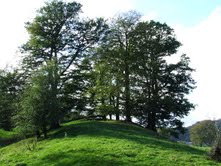 I came to the Vyrnwy Valley in 2001. I hadnt intended to but I fell in love on a storytelling course and my fate was set. Coming to a strange place and a new partner I could never have anticipated that all this would lead to the discovery of a magical grove, a terrible loss and the writing of a childrens book.
I came to the Vyrnwy Valley in 2001. I hadnt intended to but I fell in love on a storytelling course and my fate was set. Coming to a strange place and a new partner I could never have anticipated that all this would lead to the discovery of a magical grove, a terrible loss and the writing of a childrens book.
The Seven was released by Pont Books two weeks ago early and caught us all out. I very much see Celias hand in this. Sadly I lost Celia to cancer in 2006 but it is part of my late wifes mischievous nature to keep us all on our toes like this..
I came to Welsh Myth, and therefore I suppose to Wales in 1992 when I discovered The Mabinogi. It was Pwyll Prince of Dyfedd whose name I still cant pronounce. I always wondered what happened to him later on. I didnt believe Arawn was a nice guy. He didnt seem like it to me.
Later on I rediscovered King Arthur and all those magical tales of childhood and then in 1995 on a druid retreat on Iona the figure of Taliesin came into my life and has never quite let go.
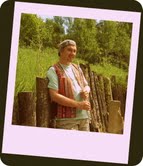 Then in 1998 I started a story which would fifteen years later re-emerge as The Seven . It was so complicated that I couldnt even tell you the plot or main character. I took so many walks up and down the road where we lived in Somerset and was no closer to knowing. Two years later I met Celia and came to Wales and one winter after a storm we discovered the grove of seven and I named all of them after characters in my complicated story; Child, Dark Lord, Warrior, Queen, Bard, Seeker and Mage. A little green mound of four oaks, two beeches and a single little ash at the top of a steep rise like an upturned half orange with seven cocktail sticks stuck in it. The trees seemed to suit the names and we came there often.After Celia died of cancer in 2006 I threw away everything I had written. As my muse she seemed to be guiding me to do this. As it turns out she was right.
Then in 1998 I started a story which would fifteen years later re-emerge as The Seven . It was so complicated that I couldnt even tell you the plot or main character. I took so many walks up and down the road where we lived in Somerset and was no closer to knowing. Two years later I met Celia and came to Wales and one winter after a storm we discovered the grove of seven and I named all of them after characters in my complicated story; Child, Dark Lord, Warrior, Queen, Bard, Seeker and Mage. A little green mound of four oaks, two beeches and a single little ash at the top of a steep rise like an upturned half orange with seven cocktail sticks stuck in it. The trees seemed to suit the names and we came there often.After Celia died of cancer in 2006 I threw away everything I had written. As my muse she seemed to be guiding me to do this. As it turns out she was right.
I thought Id given her a suitable memorial with our CD version of The Song of Taliesin, (the piece by John Matthews that Id performed for years) in 2009 but she wasnt finished yet. The unwieldy project came back to me as a childrens book and in keeping with my feelings it deals with loss and change and a young boys coming to terms with his mothers death. But it has King Arthur in it and Merlin and Taliesin which she would have loved. And it does tricksy things with the story of Branwen. Its full of Celias kind of mischief but Id like to think that one day soon parents and children can sit and read it together and then talk about loss. She would have loved that.
Seven trees? Seven guardians? Seven helpers? Seven pictures? What's so special about the number Seven? Tony's so full of questions, he thinks his head will burst. But that's nothing new. Since Mum died he's had more questions than answers. Those scary paintings of hers for one thing. And that new girl, Eleri. She's seriously weird. As if she's waiting for something ...or someone ...
On October 29th 1929, the 'Wall Street Crash' in New York, resulted in the Great Depression.
The effect of the 'Wall Street Crash' on Wales;
The American economic collapse had a devastating effect on the industrial areas of Wales, as demand for products collapsed with the result that by the end of 1930, unemployment had more than doubled. It also caused massive emigration, with Wales loosing 390,000 people between 1925 and 1939. Low incomes resulted in poor health and substandard housing and the reduction in unemployment benefit, led to massive protests.
Born on this day 1951 in Cardigan
Brynmor Williams - dual-code, Welsh rugby union and rugby league international, who played in three tests for British and Irish Lions against New Zealand in 1977.
On 29th October 1794, Benjamin Llewelyn was appointed lighthouse keeper of the newly constructed Mumbles Lighthouse.
The Harbour Act of 1791 had allowed for the construction of the lighthouse, which was originally lit by two open-fire braziers. In 1798, these were replaced by a revolving light made up of twelve oil-powered lamps fitted with reflectors, to which a dioptric lens was added in 1860, which greatly magnified the light. In 1935, the lighthouse was converted to an automatic electric control system, which resulted in the lighthouse keeper being no longer required.
The Banc Ty'nddôl sun-disc is a small, decorated, gold ornament discovered in October 2002, at Cwmystwyth, Ceredigion. It is most likely, part of a funerary garment and is thought to be over 4,000 years old, making it the earliest gold artifact found in Wales.
Born on this day 1958 in Ammanford.
Terence David John "Terry" Boyle - former Wales international soccer player, respected for his strong tackling and uncompromising style of play.
Cardiff acheived city status on 28th October 1905 in recognition of its great economic and industrial success.
A timeline history of Cardiff;
Long barrows such as those at Tinkinswood and Coedkernew demonstrate the presence of people in the area in Neolithic times.
The area was populated by the Silures tribe by the first century AD. The origins of the name Cardiff most probably derives from the Welsh/Brythonic name Caerdydd - "fort on the Taff".
The Romans began to settle the area c 75 AD and built a fort on the banks of the Taff, to protect the Severn estuary.
In 1081, the Normans built a castle on the site of the old Roman fort.
In the Middle Ages, Cardiff had developed into a port and trading centre, with a population of approximately 1,500. In 1404, during the rebellion of Owain Glyndwr, the town and castle were burned.
Cardiff was created a free borough in 1542.
Cardiff, strategically positioned at the bottom of coal and iron valleys, benefited greatly from the Industrial Revolution, with the first dock being built in 1830.
By 1881, Cardiff was the most populous town in Wales.
Cardiff achieved city status on 28th October 1905
Cardiff was proclaimed the capital city of Wales on 20th December 1955.
The Empire Games were held in Cardiff in 1958.
Cardiff today is the home of the Welsh Assembly Government and the largest waterfront development in Europe.
How Green Was My Valley, released on 28th October 1941 is a drama film set in the South Wales Valleys and directed by John Ford.
The novel on which How Green Was My Valley is based,is a 1939 novel by Richard Llewellyn, telling the story through narration of the main character, of his Welsh family and the mining community in which they live.
Released on DVD on 28th October 1997, Twin Town, set in Port Talbot and Swansea and featuring an almost exclusively Welsh cast.
In the film, Swansea, is shown as it is viewed by two disaffected young brothers played by real-life brothers Llyr and Rhys Ifans. They steal cars, smoke dope, and generally cause mayhem in the town.
Born on this day 1950 in Tylorstown in the Rhondda Valley.
John Charles Bevan, nicknamed "The Ox" - former Wales and Lions rugby international.
Born on this day 1953 in Cardiff
Philip John Dwyer- former Wales soccer international, who played 471 times for Cardiff City, which is the club's all-time appearance record.
Many thanks to John Good for drawing our attention to this excellent website:- http://whywelsh.wordpress.com/
It seeks to answer misconceptions and explode some myths about the Welsh language.
In the second of an occasional series for Welsh learners we are pleased and proud to present Dwy Afon / Two Rivers by Mike Jenkins. Mike is an acclaimed poet from Wales who is himself a Welsh learner and he has agreed to provide an occasional poem for the site in both Welsh and English to help AmeriCymraeg students and independent learners. Mike has been in Portland recently for the AmeriCymru/PSU event 'Culture Wars' and the Wordstock literary festival. Go to this page for a video of the Culture Wars panel discussion. Meanwhile you will find a selection of Mike Jenkins works on the Welsh American Bookstore here:-
DWY AFON
Enw yr un afon yw Gorffennol
ac mae en symud
yn araf ac yn ofalus
fel hen ddyn yn y pentref,
gwisgo cot brown, het llwyd
a siarad mewn llais sibrwd.
Mae en cymryd llawer lawr :
meddyliau am y rhyfel,
am y daith ir ddinas,
am yr hen iaith oedd yn ddiwerth,
y dociau oedd yn tyfu;
rhifo pob rhan or glo.
Enw yr ail yw Dyfodol
ac mae en brysio
yn gyflym ac yn ddiofal
fel bachgen ifanc yn y dre,
gwisgo siaced wyn, cap glas
a siarad mewn llais uchel.
Mae en cymryd llawer eto :
meddyliau am ffindio gariad,
am y daith ir tywyllwch
pan fydd en gadael adre,
y cwrdd yn yr aber
ac ar ol, y mor anferth.
MIKE JENKINS
..
TWO RIVERS
..
The name of the first is The Past
and it always moves
ponderously and carefully
like an old man in the village
wearing a brown coat, grey hat
and speaking whisperingly.
It carries a heavy weight :
thoughts of the wars,
a journey to the city,
the old language fading away
as the docks spring up ;
counting the cost in coal.
The name of the other is The Future
and it always hurries
quickly and carelessly
like a young boy in the town
wearing a white jacket, blue cap
and speaking in a loud tone.
But it also carries a load :
thoughts of finding love,
the journey into darkness
when it will leave home,
the meeting at the mouth
and , afterwards, the great ocean.
(non-literal translation by the author)
Dylan Marlais Thomas was born on October 27, 1914, at 5 Cwmdonkin Drive in Swansea. His father was an English teacher at the local grammar school and would recite Shakespeare to Thomas before he could read.
He therefore excelled in English and reading but neglected other subjects and dropped out of school at sixteen to become a junior reporter for a local newspaper. Then in 1932, he decided to concentrate on poetry full time.
In 1934, Thomas moved to London and published his first book of poems, to great acclaim. Two years later, Thomas met the dancer Caitlin Macnamara and married in 1937. The marriage however, was turbulent, with rumours of both having multiple affairs. The couple left London in 1944 and eventually settled at the Boat House in Laugharne.
In January 1950, Thomas engaged on a reading tour in America, which was a great success. However on a further tour in 1953, he collapsed in the Chelsea Hotel after a long drinking bout at the White Horse Tavern and on November 9th, he died at St. Vincent's Hospital in New York City at the age of 39.
He is buried in Laugharne and has a memorial plaque in Poet's Corner in Westminster Abbey.
Born on this day 1617 in Knucklas, Radnorshire.
Puritan preacher - Vavasor Powell
Powell was educated at Jesus College, Oxford, before returning to Wales as a schoolmaster during which time he also became an itinerant Puritan preacher, travelling throughout Wales.
In the build up to the English Civil War, Powell was forcibly removed from Llanyrne Church in Ross by the Royalist Bishop Hugh Lloyd and imprisoned. At the end of theFirst Civil War in 1646, Powell returned to Wales and resumed his itinerant preaching.
In 1650, he was appointed by Parliament to identify incompetent ministers, but was arrested again in 1653, for criticising Oliver Cromwell for accepting the office of Lord Protector. After the Restoration in 1660, Powell was arrested again and spent the majority of his last ten years in prison.
On October 27th 1913, South Wales experienced a tornado which was described as 'unusually destructive'.
The storm was short, but the damage it caused was extensive. It was at its worst at Edwardsville, where a man and a small boy were killed, houses were destroyed, and trees uprooted.
Vice Admiral Sir Hugh Evan-Thomas (27 October 1862 – 30 August 1928) was a British Royal Navy officer, who distinguished himself at The Battle of Jutland during World War I and of whom, Admiral of the Fleet John Jellicoe had the greatest admiration.
Thomas' family owned the Llwynmadoc estate near Beulah, Powys, the Gnoll in Neath and Pencerrig near Builth Wells. After his death, a memorial service was held at Eglwys Oen Duw church in Beulah and a year later, Neath council purchased the Gnoll estate, to serve as a public park, where a war memorial would later be erected.
Reproduced with kind permission from Mike Jenkins -Welsh Poet & Author blog
The 3 Literateers above the Columbia River
( myself, Phil Rowlands & Chris Keil).
Photo copywright - Gaabi Beckett
Leaving Syracuse I did feel some sense of achievement.
I had limited success as a missionary for the cause of Cymru. I had finished Jeremy Hooker's fascinating journal 'Upstate' about his year spent in that very city and the dog Molly had even managed to train me to do a game with her favourite, well-chewed squeaky toy.
Above all, I had reclaimed my luggage intact, though curiously opened by the TSA, who left their calling card.
I was greeted at Portland airport by Ceri Shaw of Americymru, wielding a placard with JENKINS on it.
I only knew Ceri and his partner Gaabi because of their formidable presence online. They have created the pioneering website Americymru and organised events in the past, some for the Wordstock Festival and others for their own West Coast Eisteddfod.
Ceri is to the internet what Walter White of 'Breaking Bad' is to 'cooking' ( meth , not food!).
Indeed, Ceri introduced me to that captivating drama series when I was in Portland and I became addicted.
Americymru is always looking to expand and Gabriel has become just as enthusiastic about Welsh culture. They now offer Welsh lessons and a 'Welsh American Bookstore'.
In a largely separate project, Ceri and Phil Rowlands edit the magazine of new writing 'Eto', which is into its second issue and always looking for new material.
What would I make of Portland, a city I'd been told was avowedly leftfield and full of creativity?
My first impressions were of distant volcanoes and volcanic mountains and many river bridges. Mount Hood resembled a huge cone of ash which looked as if it would erupt and send its contents to cover the streets any minute.
Even the bridges had the feeling of precariousness, as many could rise up in the middle to allow large boats to pass.
The sidewalks of the city bustled with jugglers, beggars and drummers who hammered out complicated rhythms on white plastic bins. Full of dynamism, it also portrayed the other side of US society as I'd never witnessed before.
I had never seen so many homeless people in one city: on grass, sidewalks or queuing outside the Mission; they sat defeated and without hope.
Where was the American Dream for them? More like the kind of nightmare depicted in Arthur Miller's 'Death of a Salesman'.
People abandoned by society and now as low as you could get. Would Obamacare save any of these? They desperately needed employment and decent homes and it would take a lot more than healthcare to solve this massive problem.
Portland also seemed familiar in some ways : it had Credit Unions and pawnbrokers and the supermarket even reminded me of Tesco in Merthyr ,in contrast to the one in Syracuse with its Organic section the size of a pie and pasty one in the Valleys.
While I'd only seen one public bus in Syracuse, Portland's transport system was geared for a less affluent, non-driving population and its regular trams and buses were reminiscent of Manchester.
Though, like Syracuse, the bike hardly got a look in and the States are playing catch-up (or should that be 'ketchup'?) on that vital mode of transport.
Like Syracuse, some roads were lined with junk food outlet after outlet, including ones I'd never heard of like Wendys and Jumpin' Jacks. I got to sample the delights of a heart-hammering, sugar-doping yet strangely finger-licking breakfast of hash browns , French toast and maple syrup.
My first event was at Portland State University and entitled 'Culture Wars', as it was based around Tracy Prince's book 'Culture Wars in British Literature' .
Tracy is a lecturer there and led a panel discussion with her well-argued proposition which illustrated clearly how peripheral Welsh Writing in English is in British Literature.
She linked it aptly with the marginalising of black literature and she put forward a strong argument for the greater inclusion of these within the so-called canon.
Given that British Lit. in American universities is largely English Lit., I have a lot of sympathy for her treatise. It is based on sound principles, though when she cited Mrs Windsor as an advocate for greater multicultural diversity I began to lose that sympathy. Like Ed Miliband, the monarchy just want to create a deluded sense of 'One Britain' ( clinging to the last strands of Empire).
My counter argument was that Welsh Literature should be seen as one entity and dealt with as such. In both English and Welsh there is such a tension, similarity and indeed on-going dialogue, especially now that more writers are using both languages, such as Jon Gower, Gwyneth Lewis and Grahame Davies.
I cited my friend at Le Moyne Prof. Dave Lloyd as an example of what could be done. As well as bringing a number of Welsh writers over, he has for many years taught Welsh Lit. ( on a par with Irish Lit.), relating the mythology of the Mabinogion to modern texts in both languages.
Like our Irish counterpart, we deserve a unique place on syllabi, not just in the USA but at home as well.
Taking part in this discussion made me think about the absurd situation in our schools and colleges, where Welsh Writing in English plays a negligible part in that subject English Literature (not even Literature, though it includes many American writers on the syllabus).
British Literature would not comprise one of the most important poets of our time, Seamus Heaney and you cannot divorce these terms from the rapidly-changing political reality. If Scotland votes for their nominal independence next year, where does that leave Britishness and,like Heaney, many Catholics in the six counties (N. Ireland) can hold Irish passports to match their allegiance.
A day manning the Americymru stall at Wordstock followed.
Wordstock is Portland's annual book fair and festival of writing, though Star Wars was a category on a par with Poetry and Fiction and we kept meeting Darth Vader on the road crossing.
There are stalls for individuals, publishers and even magazines on hen keeping! There are also many readings and interviews.
Listening in on a few of these I had the impression of the great I AM, with writers talking to wannabes and the public few and far between ( even the English media orientated Hay has many book lovers).
Writing was viewed solely as a career and the whole Creative Writing industry much criticised by the likes of Rob Minhinnick did seem out on force.
A lot of writers were researching Medieval Wales for their fantasy novels, but had yet to visit this country.
Sometimes, it was a rare pleasure just to talk beyond the sales of books and online processes , about real issues and the power of the vernacular.
The final event I took part in was a reading at Mount Hood Community College, organised by Ceri and Jonathan Morrow, a Welshman there who helps lectures and helps produce their magnificent creative writing magazine 'Perceptions'.
As with Downtown in Syracuse, it was the dialect poems which struck a chord , the tales of Merthyr in all its crazy humour and anger somehow relating to a place just as downtrodden and neglected.
I am grateful to Gaabi and Ceri for giving me these opportunities and also tipping me off about the mountain lions!
Also, to fellow scribblers Phil Rowlands and Chris Keil who made the stay so stimulating.
The Stereophonics conquered Portland that same weekend, but I'd like to think we did our bit for Cymru, showing that we do have a highly distinctive culture and not one which has to ape English literature.
As America once was, so are we a young democracy, trying to forge our own way despite the strictures of economic austerity imposed from London.
TWITCHING CHRYSALIS
On the sidewalk of Burnside,
lying in mid-day drizzle
road a gorge cut deep
by speeding Chevvies, SUVs
the red hand of the crossing
bloody and staying on stop
she wouldn't get over,
there was no point
a cold, damp chrysalis
waiting for metamorphosis
anxious for those butterfly wings
crystal blue and white
her burnt and crumpled skin -
something in her bag keeps twitching
reading a dollar bill-sized book
it's title ? ?

